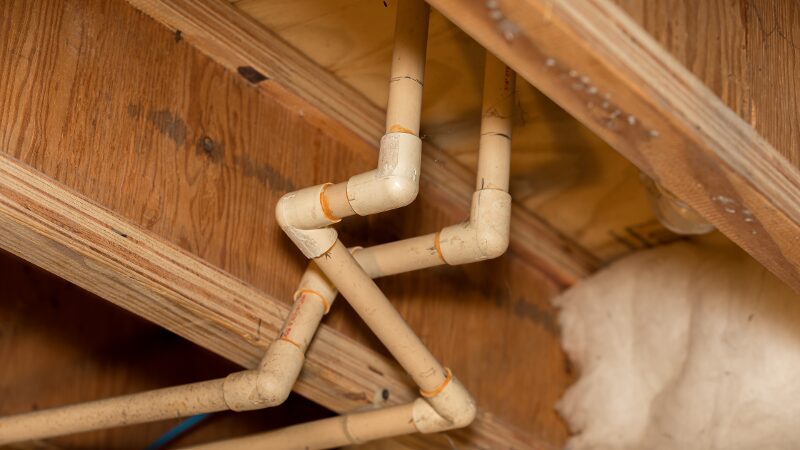How Moisture Gets Inside Your Crawlspace
Seasonal changes as well as other factors, such as heavy rains and flooding, can make a crawlspace damp. The moisture that evaporates from the soil underneath your home can also cause excessive evaporation to accumulate inside the crawlspace.
Another common way that moisture can get into your crawlspace is through plumbing leaks, humidity rising from the ground underneath, or downspouts that don’t extend far enough to effectively divert water away from your home. In any of those situations, the problem might go unnoticed until the damage is bad enough to become visible.
Water can come in your crawlspace through the vents as well. The main purpose of crawlspace ventilation is to keep the area under your home dry. However, vents can have the opposite effect during heavy rain and flooding, when water can seep into your crawlspace through the vents.
Should You Be Concerned about Crawlspace Moisture?
Uncontrolled moisture is the most prevalent cause of deterioration in Houston homes because it adversely affects different structural components, including concrete piers and beams, concrete slabs, and insulation above the crawlspace.
Unfortunately, a damp crawlspace can be problematic for many Houston homeowners. Even though it’s pretty normal for moisture to accumulate in the crawlspace during the wettest days, relative humidity levels shouldn’t exceed 50% for more than several days in a row. If the relative humidity in your crawlspace is above 50% most of the time, then you have a moisture problem.
In addition to high relative humidity, a series of signs indicating excessive moisture in your crawlspace may become more noticeable over time. Here are the most common ones:
- Damp air – Overly moist, clammy air inside the crawlspace or nearby areas is the first warning sign of excess humidity underneath your home.
- Mold growth and musty odors – Damp crawlspaces often trigger mold and mildew spores. These organisms can cause musty odors, which will make your home less welcoming and inviting. Additionally, mold and mildew can eat away at different building components and cause a lot of damage throughout your home.
- Pest infestations – A damp crawlspace also provides a favorable environment for pests and insects. So, if you notice any rodents or more roaches or spiders around or inside your crawlspace, this is a sure sign that you’re having a moisture problem.
- Wood/concrete deterioration – Wood/concrete deterioration can manifest itself as damage to different structural elements, including concrete piers and beams, concrete slabs, home frame, and floor joists. All these could lead to a series of additional problems, such as bowing walls, sticking windows/doors, and buckling or warping floors.
Considering all the problems that a damp crawlspace could cause, you should definitely be concerned about any kind of moisture or water that accumulates underneath your home.
How to Deal with Crawlspace Dampness
Houston is one of the cities that have alternating dry and wet seasons. Thus, moisture problems tend to occur in many Houston homes every single year. If your crawlspace is damp, the first step to solving the problem is to hire a professional who can perform a thorough inspection of your foundation and crawlspace. The role of the inspection is to reveal the root cause of the issue so that the professional can recommend the right corrective measures.
Once the underlying cause is identified and solved, addressing grading problems and installing the right drainage system around your property can help you ensure that the rainwater will flow away from your home and not into the empty space underneath. This will help you avoid future moisture-related problems in your crawlspace.
Another thing you can do to prevent water from entering your crawlspace is to enclose it. By enclosing your crawlspace, you can keep water, moisture, and pests out while also protecting the lowest accessible structure of your home. A few other measures you could opt for may include installing an internal drainage system, such as a sump pump, insulating the crawlspace, and installing a dehumidifier, which should help you keep the humidity levels in check throughout the year, but especially during the wet season. As well, make sure that you clean any clogged gutters and fix loose ones so water can flow freely down to your drains.
If your crawlspace shows any signs of moisture, don’t let it destroy your Houston home and get in touch with Allied Foundation today! Not only will our experts provide you with a free crawlspace and foundation inspection and estimate; they can also offer you the right solution to stop recurring moisture problems in your crawlspace and home!

